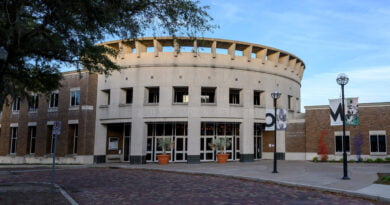Why the RBA may be forced to cut interest rates before the Fed
There’s been a nearly universal assumption by both analysts and traders that the US Federal Reserve will effectively kick off the global rate-cutting cycle for developed economy central banks.
As recently as last month, that was expected to happen in March. More recently that was pushed to May. Now it looks like perhaps June.
Meanwhile, the Reserve Bank of Australia (RBA) hasn’t been expected to cut rates until after the Fed — at its most recent meeting, the RBA was still talking about the possibility that rates might need to rise further, although the markets paid little notice to that hollow rhetoric.
Traders are generally pricing in August as the likely start for RBA rate cuts and a lot of local analysts are predicting either September or November (remember the RBA is only meeting eight times this year, not 11).
Gareth Aird at CBA is one of those tipping September but has put out a chart pack that could easily be seen to make a strong case that the RBA might need to cut before the Fed.
Australian mortgage rates have risen six times more than US ones
We all know the Fed has raised its cash rate more than the RBA (5.25 percentage points versus 4.25) and started doing so earlier.
But what many don’t realise is the extent to which the prevalence of long-term fixed mortgages (we’re talking 30 years in many cases) has insulated a lot of households from rising rates.
While the average mortgage rate in Australia has risen by 3.2 percentage points since the RBA started hiking (and that will keep rising over the next year as more short-term fixed mortgages roll off), US home borrowers, on average, have seen their interest rates rise 0.5 of a percentage point.
At a recent briefing with global fund management giant Fidelity, chief investment officer Andrew McCaffery estimated that the rate of monetary policy transmission in the US economy-wide was about half that of Europe — roughly 0.25 percentage points for every 1 percentage point of tightening, versus 0.5 for Europe.
“Much lower process of transmission because of the amount of fixed-rate capital market formation on bank lending,” he told the reporters in the room.
He didn’t have a number for Australia but, given the prevalence of variable rates and very short-term (one, two or three-year) fixed loans, I’d imagine we’re even higher than the Europeans.
Australian households are suffering much more than Americans
Due to that rapid pass-through of surging interest rates, higher inflation over recent months than seen in the US but with lower wage rises, and the effects of bracket creep that have pushed average income tax rates up to record levels, Australian households have seen a dramatic fall in their real living standards. Americans haven’t.
“Real household disposable income per capita has contracted sharply in Australia due to negative real wages growth, rising dwelling interest paid and taxes paid,” Aird notes.
“Real household disposable income per person has been on an upward trend in the US.”
It’s no surprise then that Americans keep spending money, albeit with figures out last night showing a 0.8 per cent drop in retail sales last month and downward revisions to spending in November and December.
“Real household consumption per person in Australia is forecast to contract again in Q4 23,” extending that negative run to five quarters, Aird adds.
Household consumption supports well over half of Australia’s economy, and far more again of its jobs due to the labour-intensive nature of the services sector, so it’s no surprise that unemployment is starting to rise “quite sharply”, as Gareth Aird puts it.
Once again, from being around similar levels, Australia is now clearly underperforming the US.
“The trend unemployment rate is on a clear upward trend in Australia and sits 0.5 percentage points above its cyclical low. In the US, the trend unemployment rate is just 0.2 percentage points from its cyclical low,” Aird observes.
On one measure widely adopted in the US, called the Sahm rule, that 0.5 percentage point increase in Australia’s trend unemployment rate, which has occurred in the space of just over a year, would come close to officially signalling the start of a recession.
Due to local differences in Australia, the RBA says unemployment needs to rise 0.75 per cent over a year to activate the Sahm rule definition of a recession … but if the past couple of months of weak jobs numbers continue, it may not take long for Australia’s slowing labour market to achieve that.
The other graph above shows the Purchasing Managers Index, a leading measure of business conditions. Once again, a clear divergence has emerged between the US and Australia, one that isn’t favourable to us.
Given all of that, it surely isn’t surprising to see Australia’s inflation rate falling much faster than the US.
Sure it’s still above, but that’s because it peaked higher and later. At the current rate of decline, Australia’s inflation rate will be below America’s within just a few months.
The major caveat to that is that the “last mile” of bringing inflation down is often the hardest.
This is the “sticky” services inflation that Reserve Bank governor Michele Bullock has referred to.
US Fed officials think they’re already in that home stretch, while the RBA believes we’re nearing the end of the relatively easy disinflation from falling imported good prices as COVID supply bottlenecks unwound.
Loading…
Markets still see earlier and harder US rate cuts
Nonetheless, if you just looked at all the economic data above and were asked which country was going to cut rates first, you’d surely pick Australia.
That choice would only be reinforced when you realise the Fed is targeting a slightly lower inflation rate than the RBA.
“The RBA’s inflation target is 2-3 per cent, whereas the US inflation target is 2 per cent,” notes Aird.
Yet the market pricing is not only for US rates to start falling sooner, but for them to fall much faster and further than the Australian rates.
Perhaps the markets will be right — they’re the ones with some real skin in the game — but on current trends, you’d have to say it’s not out of the realms of possibility that the Reserve Bank could be forced to cut before its big sibling in the States.
And, if it doesn’t, then it could risk falling off its narrow path and suffering the hard landing it has been seeking to avoid.





